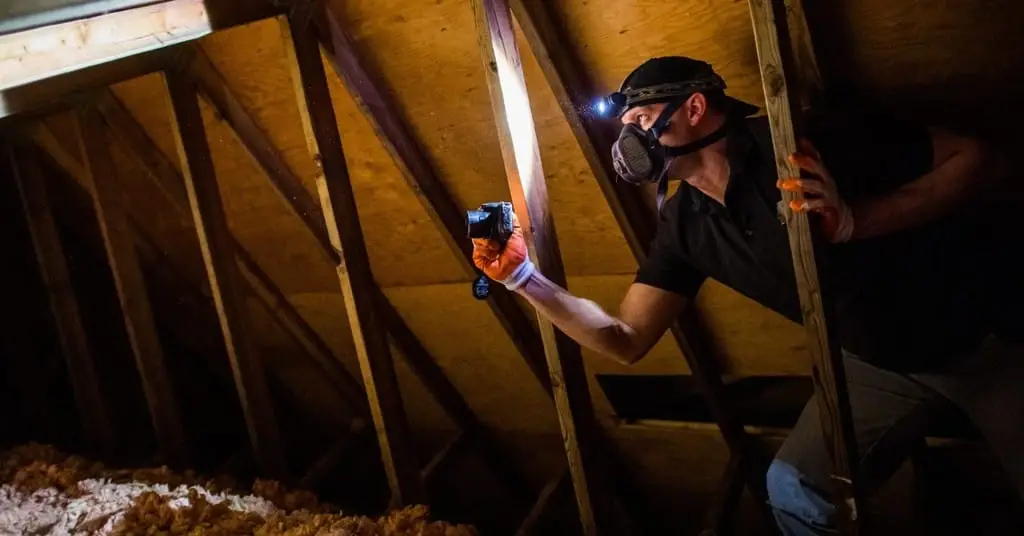Make Confident Decisions Backed by Home Inspection Lockhart Professionals
Wiki Article
What to Get Out Of Home Inspection: a Detailed List and Its Importance
Recognizing what to expect from a home assessment is essential for both purchasers and sellers in the real estate market. A thorough inspection gives a detailed checklist that analyzes vital components such as structural integrity, major systems, and overall property problem.
Importance of Home Inspections
The relevance of home inspections can not be overemphasized, as they serve as an important guard for both buyers and sellers in the property market. For buyers, a home evaluation supplies an impartial evaluation of the residential property's problem, exposing prospective problems that may not be noticeable during a laid-back walkthrough. This procedure helps customers make educated choices and discuss repair services or cost adjustments before closing, inevitably protecting their investment.Conversely, sellers can take advantage of home assessments by attending to problems proactively before detailing their residential property. This can boost the home's marketability and potentially accelerate the sales procedure. A pre-listing inspection can also impart confidence in prospective customers, as it demonstrates transparency and a commitment to preserving the residential property.
In addition, home inspections add to the total security and habitability of household properties. In recap, home inspections are a vital part of real estate transactions, giving crucial insights that cultivate depend on and transparency amongst all events included.
Key Parts of the Checklist
A comprehensive home examination checklist incorporates numerous key elements that make sure a thorough assessment of a building's condition. The first part is the structural honesty, that includes the assessment of the structure, wall surfaces, and roof covering for any kind of signs of damage or wear and tear. Next, the list addresses major systems such as pipes, electrical, and heating and cooling, assessing their performance and safety.One more critical location is the outside of the home, which entails examining house siding, windows, doors, and roof materials for wear and prospective leaks. The checklist also covers interior elements, including floor covering, walls, ceilings, and insulation, to recognize any problems that might affect convenience or safety and security.
Additionally, the checklist commonly consists of an examination of home appliances, guaranteeing they are in great functioning order. Last but not least, the assessment ought to evaluate outside spaces, consisting of patio areas, driveways, and decks, to review their problem and security. Each of these components plays an essential function in providing an extensive understanding of the residential property, eventually assisting possible customers in making educated choices concerning their financial investment.
Typical Problems Located
Frequently, home assessments disclose a selection of issues that can vary from minor repair work to considerable safety issues. One prevalent concern is the visibility of water damage, commonly stemming from leaky roofings, plumbing failures, or not enough drain systems. Such damages can lead to mold and mildew growth, which poses health threats and may need considerable remediation.
An additional typical finding entails electric systems. Obsolete electrical wiring, overloaded circuits, or improper grounding can create fire threats and necessitate instant focus. Additionally, problems with cooling and heating systems, such as inadequate maintenance or age-related ineffectiveness, can affect convenience and energy costs.
Structural issues like split foundations or jeopardized framing are additionally often kept in mind. These problems can lead to significant consequences if not attended to without delay. Pests such as termites or rodents may be discovered, suggesting the capacity for substantial residential or commercial property damages.
Finally, the condition of doors and windows typically comes under examination. Poor seals can cause energy loss, while harmed structures or glass can affect safety and security and visual appeals. Determining these usual issues during a home examination is essential for notified decision-making and making certain the safety and durability of the residential property.
Preparing for the Inspection
Prep work is essential for a successful home examination, ensuring that both vendors and customers can navigate the process with self-confidence. Begin by arranging the assessment at an equally hassle-free time, enabling for sufficient accessibility to the building. For vendors, it is recommended to declutter and clean the home extensively, as a neat environment can favorably affect the assessor's analysis.
For customers, preparing entails compiling a list of specific concerns or areas of passion to go over with the inspector. It is beneficial to accompany the inspector throughout the walkthrough, as this supplies direct understanding right into the residential property's problem. Making sure that all utilities are operational can aid the assessor in conducting a detailed evaluation. By taking these preparatory actions, both parties can set the phase for a thorough and effective home examination experience.
Post-Inspection Activities
After the assessment is full, both vendors and buyers should take certain activities to resolve the findings. For check over here buyers, the first step is to thoroughly examine the inspection report, noting any type of significant concerns that might affect their decision.Sellers, on the various other hand, need to examine the searchings for to determine which issues they can deal with prior to wrapping up the sale. Dealing with small repair services can improve the residential property's charm and potentially result in a higher list price. Vendors might pick to disclose concerns to possible purchasers, promoting openness and trust fund.
In instances where substantial repair services are needed, both events may profit from obtaining estimates or quotes from qualified professionals. This permits informed conversations relating to repair work duties. It is necessary for both vendors and buyers to keep open lines of communication throughout this procedure to guarantee a smooth purchase. By taking these post-inspection actions, both parties can navigate the arrangement landscape with self-confidence and moved here clarity.
Conclusion
Home examinations act as a vital element in the property transaction process, ensuring a detailed analysis of a home's problem. By sticking to a comprehensive list, possible issues can be determined, securing the passions of both vendors and buyers. Attending to these concerns not only improves safety and security and habitability yet also help in financial negotiations. Eventually, the value of home examinations can not be overemphasized, as they promote informed decision-making and add to a smoother realty experience.For purchasers, a home evaluation offers an unbiased assessment of the residential property's problem, exposing prospective issues that may not be noticeable throughout an informal walkthrough.On the other click here to find out more hand, sellers can benefit from home examinations by resolving concerns proactively before noting their home (Home Inspection Lockhart).Typically, home inspections reveal a selection of problems that can range from minor fixings to substantial security concerns. Identifying these usual problems during a home examination is vital for notified decision-making and ensuring the safety and security and durability of the home
Preparation is crucial for a successful home inspection, making certain that both vendors and purchasers can navigate the process with self-confidence.
Report this wiki page